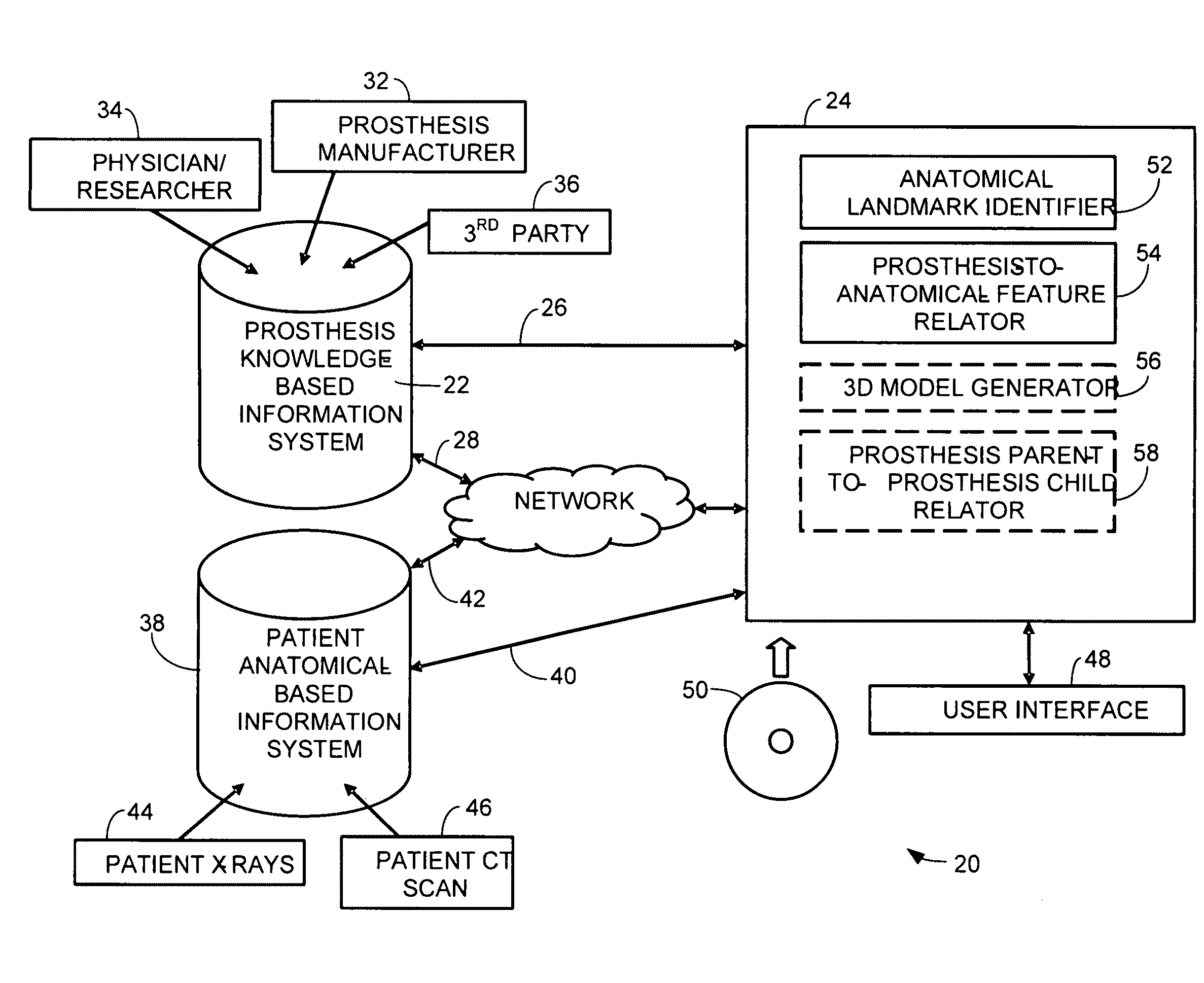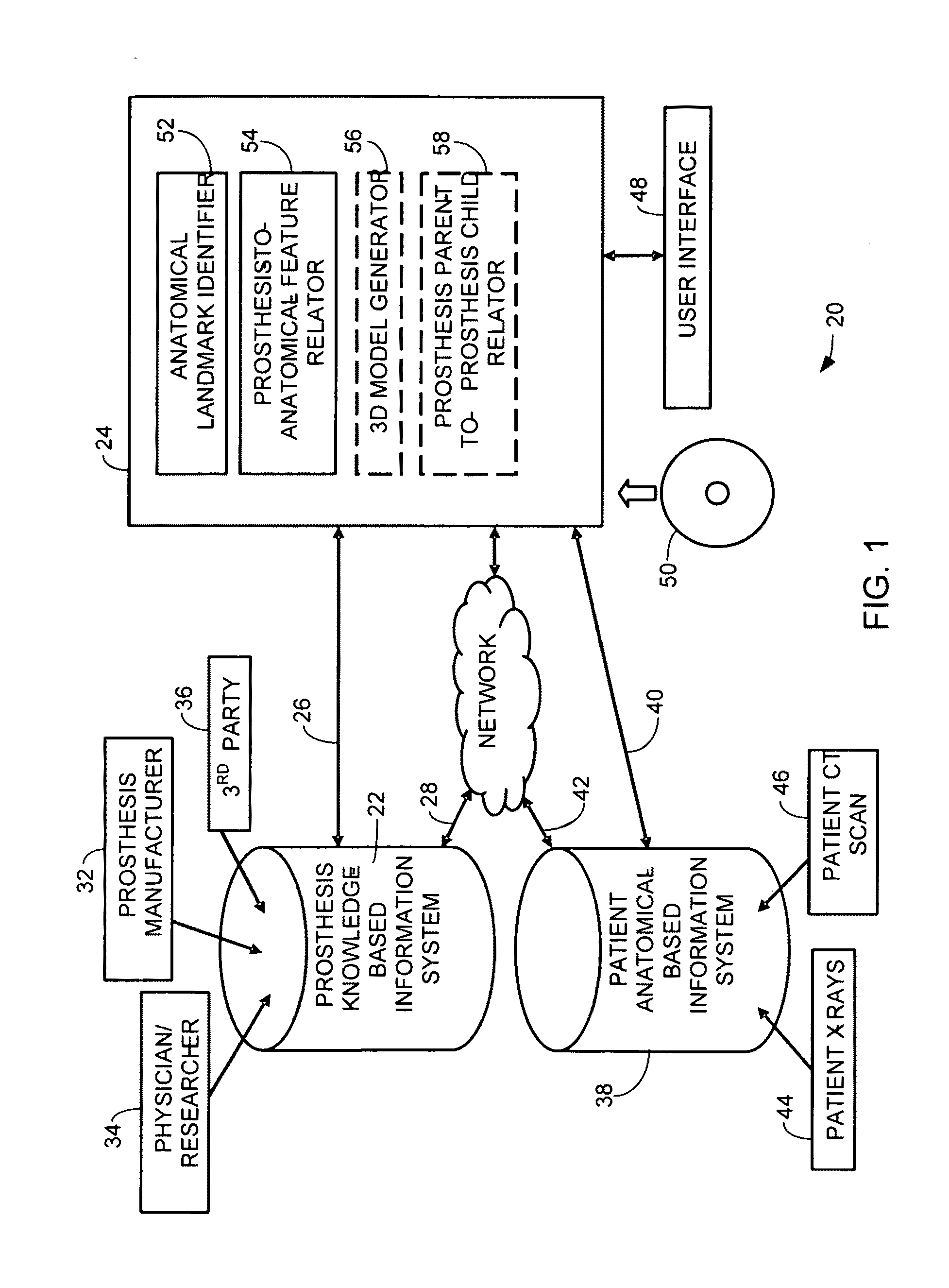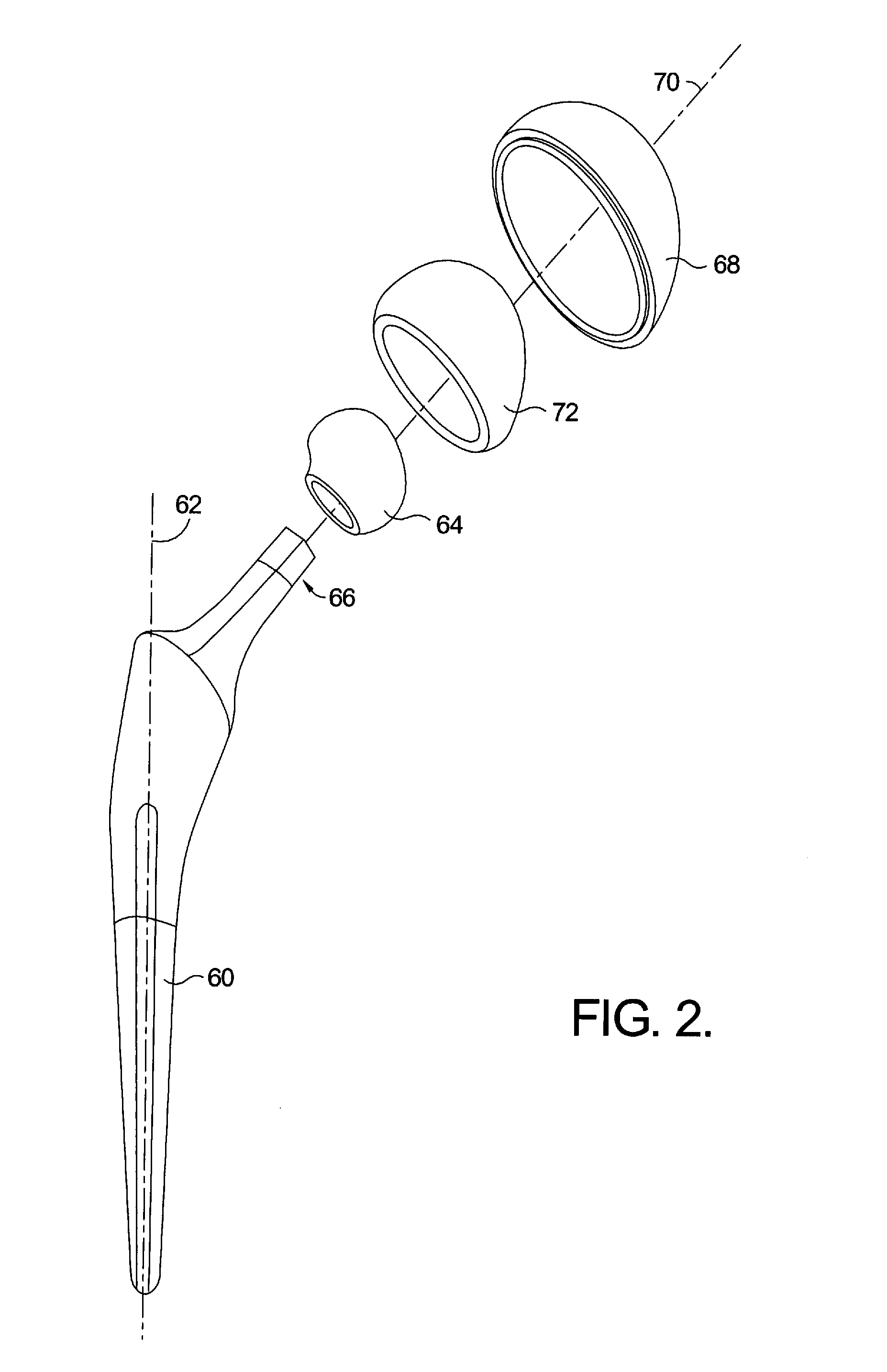Method and system for surgical planning
a surgical planning and surgical technology, applied in the field of surgical planning, can solve the problems of long and more traumatic surgeries, difficult selection of implants for fit and filling with acetate, and little effort to accurately determine the ideal position of implants prior to surgery
- Summary
- Abstract
- Description
- Claims
- Application Information
AI Technical Summary
Problems solved by technology
Method used
Image
Examples
Embodiment Construction
[0024]FIG. 1 schematically illustrates one embodiment of a system 20 for surgical planning. The system 20 has a prosthesis knowledge-based information system 22. In some embodiments, the prosthesis knowledge-based information system 22 may be a stand-alone database or set of machine-readable files which are directly accessible 26 or remotely accessible 28, for example via a network 30, by the system's controller 24. In other embodiments, the prosthesis knowledge-based information system 22 may be a locally or internally available database or set of machine readable files. The prosthesis knowledge-based information system 22 may exist on a variety of computer readable media, including, but not limited to, randomly accessible memory (RAM), read-only memory (ROM), re-writeable flash memory, magnetic media, and optically readable / writeable media such as CD's and DVD's, or any combination thereof. The one or more computer readable media for the prosthesis knowledge-based information syst...
PUM
 Login to View More
Login to View More Abstract
Description
Claims
Application Information
 Login to View More
Login to View More - R&D
- Intellectual Property
- Life Sciences
- Materials
- Tech Scout
- Unparalleled Data Quality
- Higher Quality Content
- 60% Fewer Hallucinations
Browse by: Latest US Patents, China's latest patents, Technical Efficacy Thesaurus, Application Domain, Technology Topic, Popular Technical Reports.
© 2025 PatSnap. All rights reserved.Legal|Privacy policy|Modern Slavery Act Transparency Statement|Sitemap|About US| Contact US: help@patsnap.com



